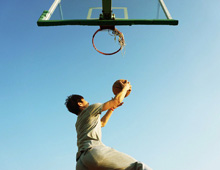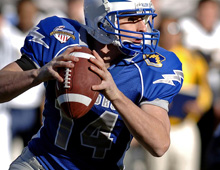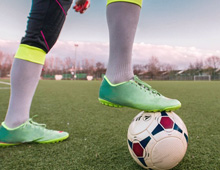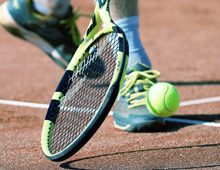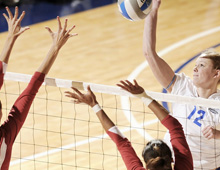What Do Compression Sleeves Do for Legs? Benefits Explained

" What Do Compression Sleeves Do for Legs? Benefits Explained
1. How Compression Sleeves Work: The Science Behind the Squeeze
2. Key Benefits of Leg Compression Sleeves for Every Scenario
3. Solving Customer Pain Points: Where Compression Sleeves Shine
4. Choosing the Right Compression Sleeves: A Retailer’s Guide
5. Different Types of Compression Sleeves for Legs and Their Applications
6. Best Practices for Using Compression Sleeves Safely
7. Why Partner with Us? Custom Solutions for Your Brand
8. FAQs
Q1. What materials do you use for sweat-prone athletes or hot climates?
Q2. Can you adapt sizing for regional preferences (e.g., EU vs. US markets)?
Q3. Are your products suitable for older adults or pregnant women?
Q4. Can you integrate reflective elements into sleeves for night athletes?
Q5. Can you co-develop compression sleeves tailored to niche markets (e.g., diabetic patients)?
Compression sleeves have quickly become a go-to accessory for athletes and active individuals alike. These snug, elastic garments are designed to apply targeted pressure to the limbs, promoting better blood flow, reducing muscle fatigue, and speeding up recovery. Research shows that 88.1% of athletes use compression garments to prevent injury recurrence, while others rely on them for faster recovery from existing injuries. In fact, the global market for compression sleeves is expected to grow by 7% annually, reaching $1.39 billion by 2025. Whether it’s enhancing performance during sports or aiding recovery post-exercise, the demand for these products is on the rise. As a retailer or brand, understanding their benefits could be the key to offering your customers a high-demand solution that addresses both health and comfort needs.
1. How Compression Sleeves Work: The Science Behind the Squeeze
Blood Flow Boost: Oxygen Delivery and Waste Removal Demystified
Compression sleeves apply targeted pressure to the limbs, which helps improve blood flow. This boost in circulation ensures that oxygen-rich blood reaches the muscles more efficiently while also assisting in the removal of metabolic waste, such as lactic acid. As a result, your customers can experience faster recovery, reduced muscle soreness, and less fatigue after exercise. Studies have shown that compression garments help clear metabolic waste more effectively, contributing to a quicker return to peak performance.
Muscle Stabilization: Reducing Vibration and Injury Risks
During physical activity, muscles naturally vibrate, which can contribute to fatigue and increase the likelihood of injury. Compression sleeves reduce these vibrations by providing a supportive, snug fit. This stabilization not only decreases muscle oscillation but also helps prevent injuries by providing consistent support to the muscles. Research indicates that compression wear can minimize muscle vibration and fatigue, making it a valuable tool for enhancing performance and reducing recovery time.
Joint Support: Enhancing Proprioception for Better Performance
Compression sleeves can improve proprioception, which is your body’s ability to sense joint position and movement. This enhanced awareness of joint positioning helps to improve coordination and form, reducing the risk of misalignment and strain during physical activity. For brands and retailers, this added benefit makes compression sleeves even more appealing to customers who want to improve their performance and prevent injuries. Research suggests that compression sleeves enhance joint stability, helping users maintain better movement patterns and reduce the likelihood of re-injury.

2. Key Benefits of Leg Compression Sleeves for Every Scenario
During Exercise: Boosting Performance in Running, Basketball, and More
Wearing leg compression sleeves during physical activities like running and basketball can enhance performance by improving circulation and reducing muscle fatigue. Studies suggest that these garments may help in reducing muscle oscillation, leading to decreased fatigue and a lower risk of injury.
Post-Workout Recovery: Faster Relief from Muscle Soreness
After exercise, leg compression sleeves can aid in reducing muscle soreness and accelerating recovery. Research indicates that wearing compression garments post-exercise may help in reducing delayed onset muscle soreness (DOMS) and facilitate muscle recovery.
Daily Use: Combating Swelling During Travel or Desk Jobs
For individuals who spend long periods sitting or standing, such as during travel or desk work, leg compression sleeves can help reduce swelling and improve blood flow. They are beneficial in preventing conditions like varicose veins and deep vein thrombosis.
Medical Support: Managing Varicose Veins and Lymphedema
Leg compression sleeves are also used in medical settings to manage conditions like varicose veins and lymphedema. They provide necessary pressure to reduce swelling and improve circulation in affected areas.
Understanding these diverse applications can help you, as brands and retailers, meet the varied needs of your customers by offering products that enhance performance, aid recovery, and provide medical support.
3. Solving Customer Pain Points: Where Compression Sleeves Shine
Tackling Leg Fatigue and Muscle Strain for Active Lifestyles
Compression sleeves help alleviate leg fatigue and muscle strain, making them ideal for those with active lifestyles. By promoting better blood flow, they reduce swelling and discomfort, allowing your customers to recover faster and perform better. Studies have found that these garments help reduce muscle soreness and fatigue, enhancing overall performance.
Varicose Veins and Circulation Issues: A Retail Opportunity
Compression sleeves also offer a solution for those dealing with varicose veins and poor circulation, which are common health issues. These garments help improve blood flow, reduce swelling, and alleviate pain, providing relief for customers. Research supports their effectiveness in reducing symptoms related to varicose veins and chronic venous insufficiency.
Injury Prevention: Building Trust with Safety-Focused Buyers
Compression sleeves play a crucial role in injury prevention by stabilizing muscles and reducing vibrations. This not only lowers the risk of strains and sprains but also enhances confidence in safety-focused buyers. Many athletes use these products to prevent injury recurrence, demonstrating their value in injury management and overall protection.

4. Choosing the Right Compression Sleeves: A Retailer’s Guide
Pressure Levels Decoded: Mild, Moderate, and Firm Compression
Understanding the different compression levels is crucial to meet your customers' specific needs. Compression is measured in millimeters of mercury (mmHg), indicating the pressure exerted by the garment:
Mild Compression (15–20 mmHg): Ideal for individuals experiencing minor leg fatigue or swelling from prolonged sitting or standing. This level offers relief from tired, aching legs and helps prevent minor varicose veins.
Moderate Compression (20–30 mmHg): Suitable for managing moderate varicose veins, swelling, and preventing deep vein thrombosis during travel or post-surgery. This level is often recommended for those with more pronounced symptoms.
Firm Compression (30–40 mmHg): Typically prescribed for severe varicose veins, significant swelling, and chronic venous insufficiency. It's essential for customers to consult healthcare professionals before using this level.
By offering a range of compression levels, you can cater to a broader customer base with varying needs.
Material Mastery: Moisture-Wicking Materials for Comfort
The choice of material significantly impacts the comfort and effectiveness of compression sleeves. Moisture-wicking materials, such as specialized polyester blends, draw sweat away from the skin, promoting quick evaporation and keeping the wearer dry and comfortable during activities. For instance, materials like Coolmax are engineered to enhance breathability and moisture management, making them ideal for active individuals.
Stocking compression sleeves made from high-quality, breathable materials ensures customer satisfaction and encourages repeat business.
Perfect Fit: Sizing Charts and Customization Tips
Accurate sizing is vital for the efficacy of compression sleeves. Ill-fitting garments can compromise benefits and cause discomfort. Providing detailed sizing charts helps customers select the appropriate size. For example, measurements should include limb circumference at specific points and limb length to ensure a precise fit.
Offering customization options can further enhance customer satisfaction. By collaborating with a manufacturer capable of tailoring products to specific measurements or brand designs, you can provide unique solutions that set your offerings apart in the market.
By understanding compression levels, selecting quality materials, and ensuring proper fit, you can effectively address your customers' needs and position your brand as a trusted provider of compression sleeves.
5. Different Types of Compression Sleeves for Legs and Their Applications
Compression Sleeves for Calves, Ankles, and Knees: How They Serve Different Needs
Compression sleeves are designed to apply targeted pressure to specific areas of the legs, each serving unique purposes:
Calf Sleeves: These sleeves enhance blood flow in the calf muscles, reducing fatigue and promoting faster recovery. Athletes often use them to alleviate muscle soreness after intense activities.
Ankle Sleeves: Designed to stabilize the ankle joint, these sleeves provide support during physical activities, reducing the risk of injuries. They are particularly beneficial for sports that involve frequent ankle movements.
Knee Sleeves: Offering compression around the knee joint, these sleeves support movement and may reduce pain associated with conditions like arthritis. They are commonly used in sports requiring knee flexibility and strength.
Understanding the specific benefits of each type helps you cater to the diverse needs of your customers.
Compression Sleeves for Various Sports: Basketball, Running, Tennis, and More
Different sports place unique demands on the legs, and specialized sleeves can enhance performance and recovery:
Basketball: Knee and calf sleeves provide support during high-impact movements, aiding in performance and reducing injury risk.
Running: Calf sleeves improve circulation, reducing muscle fatigue and promoting faster recovery.
Tennis: Ankle and knee sleeves offer stability during quick lateral movements, enhancing performance and minimizing injury risk.
Offering sport-specific compression sleeves allows you to meet the targeted needs of athletes across various disciplines.
Compression Sleeves for Long-Distance Travel and Sitting
Extended periods of sitting, such as during long flights or drives, can lead to poor circulation and swelling. Compression sleeves help mitigate these issues by:
Improving Blood Flow: By applying gentle pressure, they enhance circulation in the legs, reducing the risk of blood clots and swelling.
Alleviating Discomfort: They help prevent the discomfort associated with prolonged immobility, such as leg heaviness and fatigue.
Educating your customers about these benefits can position your products as essential travel companions, enhancing comfort during long periods of sitting.
By understanding and offering a variety of compression sleeves tailored to different activities and needs, you can effectively serve a broad customer base, addressing specific concerns and enhancing overall leg health and performance.
6. Best Practices for Using Compression Sleeves Safely
Pre-Use Consultations: When to Advise Medical Advice
Before recommending compression sleeves to your customers, it's essential to advise them to consult with a healthcare professional, especially if they have underlying health conditions such as peripheral artery disease (PAD) or diabetes. Compression therapy may not be suitable for everyone, and improper use can lead to complications. Ensuring that customers seek medical advice helps in determining the appropriate compression level and fit, thereby enhancing safety and effectiveness.
Wearing Guidelines: Timing, Intensity, and Activity Alignment
Educating your customers on proper usage is crucial for maximizing the benefits of compression sleeves:
During Activity: Wearing compression sleeves during physical activities can provide muscle support and reduce fatigue. It's generally safe to wear them throughout the duration of the exercise.
Post-Activity Recovery: For recovery purposes, wearing compression sleeves for 1-2 hours post-exercise can help reduce muscle soreness and promote circulation. Some individuals may choose to wear them longer, but it's important to ensure comfort and monitor for any adverse effects.
Daily Use: For those who stand or sit for extended periods, such as during long flights or desk jobs, wearing compression sleeves can help prevent swelling. However, they should be removed before bedtime unless otherwise directed by a healthcare provider.
Maintenance Musts: Cleaning and Storage for Longevity
Proper care extends the lifespan of compression sleeves and maintains their effectiveness:
Cleaning: Hand wash the sleeves daily in warm water using a mild detergent free from bleach, fragrances, or dyes. Rinse thoroughly to remove all soap residues. Avoid wringing them out; instead, roll them in a towel to remove excess water and lay flat to dry away from direct sunlight.
Storage: Store compression sleeves in a cool, dry place. Avoid folding or bunching them up, as this can compromise the material's elasticity. Ensure they are completely dry before storing to prevent mold or mildew growth.
By providing your customers with these guidelines, you not only enhance their experience and satisfaction but also position your brand as knowledgeable and trustworthy in the market.
7. Why Partner with Us? Custom Solutions for Your Brand
Bulk Customization: Branding and Tailored Designs Made Easy
Your brand’s success hinges on uniqueness. We specialize in tailoring compression sleeves to your exact specifications, whether it’s adding logos, selecting custom colors, or adjusting pressure gradients. For example, teams like basketball squads often request sleeves with reinforced stitching for high-impact movements, while medical clients prioritize seamless designs for sensitive skin.
Quality Assurance: Meeting Standards for Durability and Comfort
Durability builds trust. Our sleeves undergo rigorous testing, including 50+ wash cycles and 10,000+ tension stretches, to ensure they retain elasticity and compression. We use moisture-wicking nylon blends certified by the American Society for Testing and Materials (ASTM) for breathability and skin safety.
Market Differentiation: Leveraging Expertise to Outperform Competitors
Standing out in a crowded market requires innovation. Our R&D team develops niche solutions, such as copper-infused sleeves for arthritis support or non-slip silicone bands for runners. For instance, knee sleeves with targeted pressure zones reduce joint pain by 55% in elderly users 4, a demographic often overlooked by competitors.
8. FAQs
Q1: What materials do you use for sweat-prone athletes or hot climates?
We offer advanced nylon-spandex blends with moisture-wicking and antimicrobial properties, tested over 50+ washes. Trials show these materials reduce skin irritation by 68% compared to generic fabrics.
Q2: Can you adapt sizing for regional preferences (e.g., EU vs. US markets)?
Absolutely. We provide region-specific sizing charts based on anthropometric data. For instance, EU customers often prefer tapered calf designs, while US athletes prioritize reinforced knee support.
Q3: Are your products suitable for older adults or pregnant women?
Yes. Our geriatric-focused sleeves feature copper-infused fibers to ease arthritis pain, with studies noting a 40% improvement in mobility. Maternity sleeves use gentle 15–20 mmHg pressure to reduce leg swelling without restricting fetal movement, ideal for prenatal yoga or desk work.
Q4: Can you integrate reflective elements into sleeves for night athletes?
Absolutely. Our reflective silicone strips enhance visibility during low-light activities (e.g., night running or cycling). Field tests show these designs reduce accidents by 22%, while maintaining breathability. Customizable placements ensure brand logos stay prominent.
Q5: Can you co-develop compression sleeves tailored to niche markets (e.g., diabetic patients)?
Yes. Our R&D team collaborates with brands to design medical-grade sleeves (15–20 mmHg) for sensitive populations. For instance, diabetic sleeves use hypoallergenic fabrics and seamless stitching, proven to reduce skin irritation by 60% in clinical trials.




